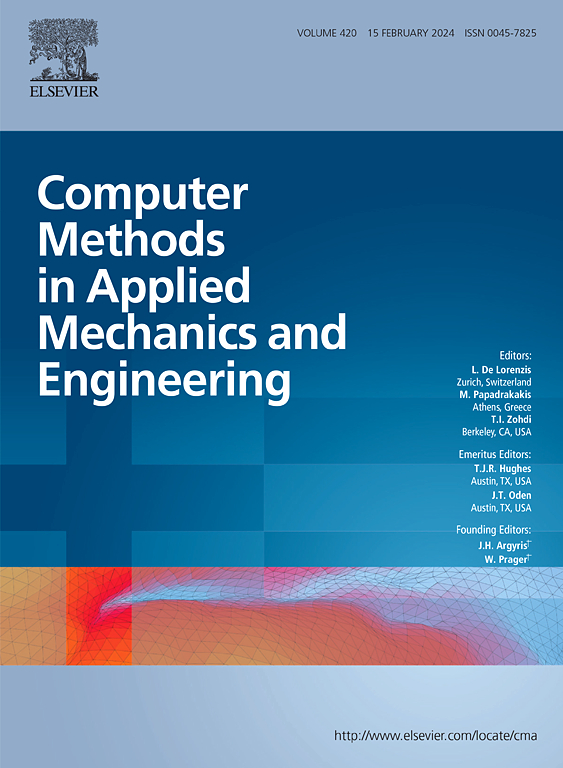Causality enforcing parametric heat transfer solvers for evolving geometries in advanced manufacturing
IF 6.9
1区 工程技术
Q1 ENGINEERING, MULTIDISCIPLINARY
Computer Methods in Applied Mechanics and Engineering
Pub Date : 2025-01-22
DOI:10.1016/j.cma.2025.117764
引用次数: 0
Abstract
We introduce a new method for solving parametric heat transfer partial differential equations on evolving geometries in advanced manufacturing applications. Physics-informed neural networks (PINNs) are a popular framework for integrating experimental data with known physical laws specified via partial differential equations (PDEs). Despite their increasing popularity, applying PINNs to manufacturing problems is limited compared to fluid and solid mechanics problems. The applications of PINNs acting as PDE solvers are absent where material is being added or removed. The objective of our work is to address this gap. By proposing a new loss function, we aim to expand the applications of PINNs for heat transfer to manufacturing problems with evolving geometries. Our method obviates the need for mesh-based discretization and time-marching schemes for evolving geometries. We consider predicting the transient temperature history in additive manufacturing as a single bead of material is deposited. We consider various evolving mixed Dirichlet and Neumann boundary condition cases to test our methodology. We verify our methodology by comparing our results with a validated finite element (FE) solver and observe that the results are in excellent agreement. Our method is naturally biased to respect causality, achieved by an automatic decrease in collocation point density as the geometry evolves. We extend our method to solve a parametric heat transfer equation for the single bead addition problem and outline the advantages in computational cost provided by our parametric solver compared to running multiple instances of an FE solver.
求助全文
约1分钟内获得全文
求助全文
来源期刊
CiteScore
12.70
自引率
15.30%
发文量
719
审稿时长
44 days
期刊介绍:
Computer Methods in Applied Mechanics and Engineering stands as a cornerstone in the realm of computational science and engineering. With a history spanning over five decades, the journal has been a key platform for disseminating papers on advanced mathematical modeling and numerical solutions. Interdisciplinary in nature, these contributions encompass mechanics, mathematics, computer science, and various scientific disciplines. The journal welcomes a broad range of computational methods addressing the simulation, analysis, and design of complex physical problems, making it a vital resource for researchers in the field.

 求助内容:
求助内容: 应助结果提醒方式:
应助结果提醒方式:


